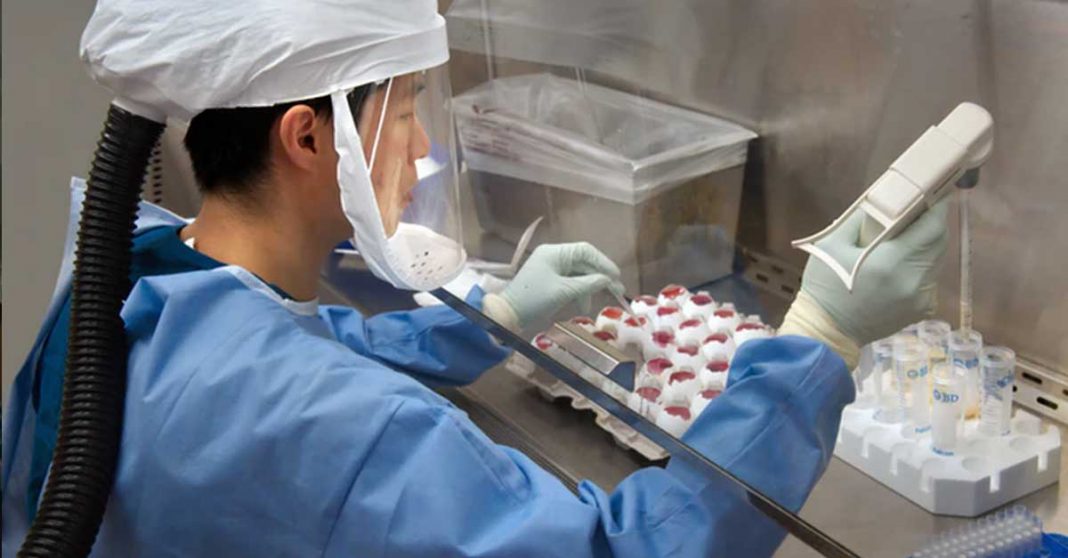UPDATED: 23 March 2020, 9:58pm
Laos, officially at least, remains free of the new coronavirus (now deemed by the international medical community as COVID-19). A Laos-shaped imprint stands out stark and grey against a sea of red on any map of the pandemic.
And yet many within and outside the country question the authenticity of this claim.
Laos has set up a national task force committee to tackle the spread of COVID-19 that originated in Wuhan, China. The task force began assessing the impact of an outbreak, although no case has yet been confirmed in the country. Stricter protective measures regarding quarantining and self-isolation have been recommended to governmental authorities. While it has provided other recommendations on restricting and postponing national and local events, regulating the price of protective equipment such as face masks and hand gels, some of the enforcement is still lacking due to limited resources.
Lao Minister of Health Bounkong Sihavong spoke at a press conference in Vientiane in late January responding to rumors of patients in Lao hospitals that had contracted the virus. He maintained that there had been no confirmation of any patients infected with the new coronavirus in Laos and that the government would take swift action against anyone who spread misinformation on social media.
This infographic from Lao Phatthana News was released showing all the suspected cases which have turned out have tested negative for the virus.
A hotline (166) has also been set up for citizens to voice their concerns or report potential cases of COVID-19, and temperature screening has been taking place at all the country’s airports.
Laos then effectively closed its borders to tourists from China, but not before at least one known carrier of the virus entered the country, traveling from Vientiane, through Vang Vieng, and then Luang Prabang. It is unclear whether he contracted the virus here in Laos or later in China where he was tested.
So how could it be that while the number of cases climbs among Laos’s immediate neighbors, this small nation bordering China itself, remains free of the virus? For a country of only 7 million, with few urban centers and a capital city of under one million inhabitants, is it possible, despite however improbable, that the virus has not spread?
It could very well be that the virus is likely here, perhaps lurking among the population, but remains undetected or untested.

However, Laos does indeed have the capacity to test for COVID-19. In a recent interview, Dr. Phonebadith Sangxayalath, Director of the National Center for Laboratory and Epidemiology (NCLE), Ministry of Health, stated that Laos is well equipped to test for COVID-19, citing his center’s ability to test for the MERS virus in recent years, and its continued surveillance of other viruses such as H1N1. Dr. Phonebadith maintains that the same principles are applied when testing for the virus. Dr. Phonebadith assures that the world will be notified if a positive case occurs.
Testing, while limited, is possible at select locations in Laos.
A number of expert observers say that Laos has a few advantages over larger, more developed nations. First, the country is not only less populated but also sparsely-populated, which means that people are thinly dispersed over a given area. There are a minimal number of places that offer the conditions for people to be crowded together such as public trains and shopping centers. The majority of people, especially in the cities, ride personal motorbikes and cars, rather than public transportation. Second, Laos is not a travel hub like Thailand or Singapore. The country has, by a substantial margin, fewer flights from and to its major international airports. It is not too often that one finds people transiting to another country through Laos. Furthermore, the hubs around Laos have been relatively successful in screening travelers heading to Laos, which limits the chances of infected persons coming into the country.
Critics, however, argue that the cultural tendency for Lao people to socialize at home and share meals and drinks, the historically lax enforcement of certain regulations, the low testing rate, and the at times misleading content on social media could potentially work against Laos’ officially COVID-19-free status.
In addition, the return of Lao laborers from Thailand also poses a risk to the larger population. The image below depicts the home provinces of the over 500 Lao workers that have recently crossed into Laos through the Thannaleng station (March 23). At the time of the writing of this article, Lao authorities are currently screening them and preparing vacant schools throughout the country to house them during this critical time.



